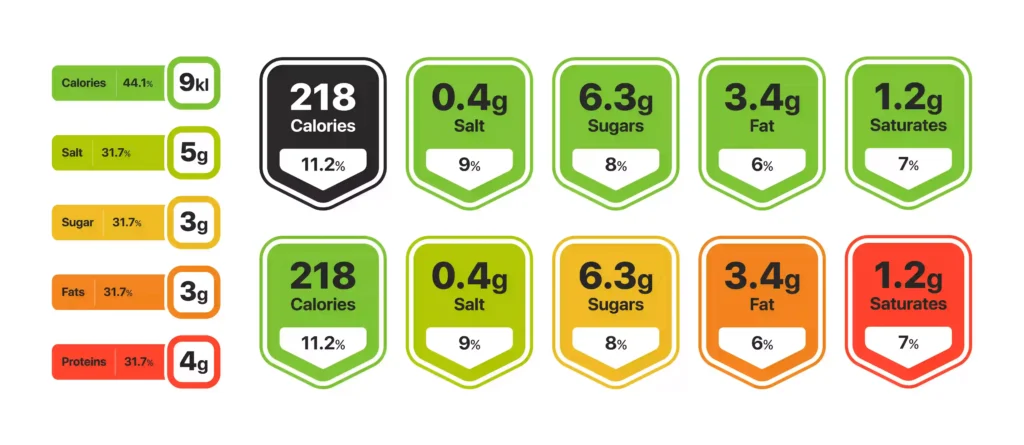Selecting the proper dog food is essential for your pet’s health and well-being. Navigating the possibilities might be daunting in a world where the dog food market is overflowing with options, all of which claim to be the finest. The nutrition you feed your dog determines several aspects of their general health, including their lifespan, energy level, and coat quality. We will go over the most important things to think about when choosing the best dog food in this extensive guide, giving you the knowledge you need to make wise nutritional choices for your pet and guaranteeing they live a healthy and happy life.
Understanding What Your Dog Needs to Eat
It’s important to comprehend your dog’s nutritional requirements before diving into the world of dog food options. Just like people, dogs need to eat a balanced diet that includes carbs, proteins, fats, and vitamins and minerals. Certain requirements could change depending on things like size, activity level, age, breed, and activity level. Speaking with your veterinarian can assist you in figuring out your dog’s dietary requirements.
“A well-balanced diet is the key to unlocking the door to a dog’s lifelong health and happiness.”
John Canine
Before exploring the world of dog food options, it’s critical to understand your dog’s nutritional needs. Depending on factors including size, activity level, age, breed, and activity level, some requirements may alter. You can determine the specific dietary needs of your dog by consulting with your veterinarian. A veterinarian may offer insightful advice on matters like the right amount of calories to consume, the right amount of protein to consume, and any particular nutritional needs based on your dog’s health, enabling you to customize their diet for maximum health. A fundamental first step in guaranteeing your four-legged friend a happy, healthy, and prosperous life is knowing what your dog needs to eat.
Age and Life Stage
Dogs go through a wide range of life stages, and each one is distinguished by unique dietary and developmental demands. Puppyhood’s early stages require specific feeding designed to promote healthy growth and development.

Puppy food, which is made with a carefully balanced combination of vital nutrients, is crucial for providing the energy needs and nutritional building blocks that a young dog friend needs to grow and mature healthily. Dogs have different nutritional requirements as they get older to stay as healthy and active as possible. A well-balanced mix of proteins, lipids, and carbs is often emphasized in adult dog chow to maintain energy levels and promote general well-being.
The later years of a dog’s life, known as the senior stage, need a customized nutrition plan that mostly addresses age-related issues. Specialized senior dog food recipes emphasize immune system support, joint health, and cognitive function. Antioxidant- and omega-3 fatty acid-rich ingredients are essential for reducing the signs of aging and extending life. Fundamentally, it is critical to recognize and address the unique dietary needs of dogs at different phases of their lives to promote their overall health, from puppyhood to adulthood and the healthy aging process in maturity.
It is our responsibility as responsible pet owners to provide our beloved canine friends with thoughtful, age-appropriate food, ensuring their health and happiness for the rest of their lives.
Understanding Pet Food Labels: Decoding the Essentials
Knowing how to read pet food labels becomes essential when you set out to locate the best dog food for your pet and want to make well-informed decisions. Labels on pet food are an important source of information because they provide details on the product’s ingredients, nutritional value, and general quality. By successfully navigating these labels, pet owners may choose a diet that supports their dog’s general health and well-being while also being in line with their demands.

An essential part of pet food labels is the ingredients list, which gives a detailed rundown of all the materials included in the product. You’ll notice that ingredients are listed in decreasing weight order, with the first few elements making up the majority of the dish. Give top priority to dog diets that contain whole grains, healthy fats, and high-quality sources of protein. Furthermore, watch out for any allergies or fillers, including artificial flavors, colors, and preservatives, which could be harmful to your dog’s health. You may customize your dog’s diet to meet their specific dietary needs and preferences by taking a closer look at the contents.
It’s crucial to comprehend the assured analysis area on pet food labels in addition to the ingredients list. The minimal or maximum amount of vital nutrients—such as protein, fat, fiber, and moisture—that must be present in the food is described in this section. These numbers help determine whether the dog food is suitable for your pet and provide an overview of its nutritional composition. The product’s composition and compliance with industry standards can also be learned by paying attention to any unique claims or certifications, like “complete and balanced” or “natural,” that are listed on the label. Gaining the ability to decipher these features of pet food labels will enable you to confidently sort through the variety of options available and, in the end, make decisions that put your dog’s health and happiness first.
Breed Size
It’s critical to comprehend the distinct requirements of varying breed sizes when it comes to your dog’s dietary needs. Both large and tiny breeds have unique physiological traits that require specific dietary considerations. For example, giant breed pups grow quickly, and appropriate bone production during their skeletal development depends on calcium levels that are carefully regulated. This emphasizes how crucial it is to choose a dog food that is specially made to satisfy your pet’s size-specific nutritional demands. Appropriate nutrition is essential for their general health and wellness, and it also helps avoid future health problems linked to improper diets. To address the specific nutritional requirements based on breed size, consider the following points:
- Calcium Levels During their fast-growing phase, large-breed puppies need regulated calcium levels to ensure healthy bone formation.
- Protein Content While large breeds may need moderate levels to promote muscle development without excessive growth, small breeds may benefit from higher protein content to meet their energy needs.
- Caloric Density Keeping a breed at a healthy weight prevents obesity in smaller breeds and guarantees enough energy for larger breeds. This can be achieved by adjusting the caloric density based on breed size. Balance Out Your Elements
- Nutrient Density It’s important to make sure the dog food’s nutrient density meets the particular nutritional requirements of each breed size to support your pet’s general health and lifespan.
- Joint Support To promote joint health and mobility, large breeds that are prone to joint problems may benefit from additional ingredients such as glucosamine and chondroitin.
Aware of their unique dietary needs concerning size. This customized dietary plan for your pet not only improves their quality of life but also acts as a safeguard against future health issues. To customize a diet that meets your dog’s exact needs, keep in mind that speaking with your veterinarian is essential. You should discuss things like your dog’s age, activity level, and any breed-specific predispositions. By providing your dog with the appropriate amount of nutrients concerning their size, you can ensure that they live a long and happy life and that you will continue to have a close relationship with your dog.
Health Conditions
It’s important to consider any specific health concerns your pet dog may be dealing with while thinking about their well-being. Similar to people, dogs can have a variety of health problems, including allergies, digestive issues, or sensitivities.
“In the world of dog nutrition, choosing wisely isn’t just a decision; it’s a commitment to the well-being of our loyal companions.”
Sarah Petwell
It is critical to treat these illnesses with a suitable diet for their general well-being and comfort. When your dog is experiencing certain health issues, it is necessary to look into diets that are customized to meet their requirements. Allergies are a prevalent health concern; some dogs may be allergic to particular components that are frequently included in commercial dog diets.
Many dog food firms offer grain-free varieties that are free of common allergens to reduce allergic responses. These specialty formulas are designed to remove possible allergen triggers while maintaining a balanced diet. Additionally, there are meals designed specifically for dogs with digestive sensitivities or problems that emphasize simple digestion and frequently contain components that are easy on the stomach. When dealing with particular health issues, you must speak with your veterinarian. They can provide invaluable advice regarding the best food choices for your pet.
You improve their entire happiness and quality of life in addition to their physical well-being by implementing a customized diet based on their medical circumstances.
Ingredients List
Examining the ingredients list is an essential step in choosing the best dog food for your pet and guaranteeing their general health and well-being. The nutrients required for your pet’s growth, energy, and general vigor are largely dependent on the components used in dog food.

Starting with top-notch protein sources is a good idea because protein is necessary for both the growth of muscles and proper bodily function. To be sure your dog is receiving a healthy and high-protein diet, look for specific animal sources—such as chicken, beef, or fish—listed prominently on the container. Think about adding healthy grains to the ingredients list in addition to protein. Whole grains give your dog vital minerals, fiber, and carbohydrates that support healthy digestion and long-lasting energy. Fillers and additives should be used with caution since too much of them can reduce the food’s nutritional content. A small amount of fillers guarantees that the majority of the elements in your dog’s food are vital ones instead of needless ones with minimal nutritional value. Additionally, it’s best to avoid feeding your dog any food that has a lot of artificial colors, flavors, or preservatives because these ingredients may have long-term negative health impacts.
Spend some time becoming familiar with the ingredients indicated on the label so that you can make an informed decision. Knowing the nutritional value and quality of the components gives you the ability to choose a dog food that meets your pet’s nutritional requirements and promotes overall health. If you’re unsure or your dog has particular nutritional needs, speaking with your veterinarian will help you make the best decision when it comes to selecting the right food for your pet.
Protein Content
Given that dogs are carnivores, it is critical to emphasize getting enough high-quality protein in their diet. Dogs do best on meals high in animal proteins, like those found in fish, poultry, or beef, as these foods supply vital amino acids that are vital to their general health. It’s critical to make sure your dog’s diet has enough protein because it supports the development of muscles, strengthens the immune system, and gives them the energy they need for daily activities.

Examine the source and quality of the protein specified in the ingredients when comparing different dog food options. Seek out particular meat sources as your main ingredients, and think about adding specified meat meals or by-products because they add more protein. Providing your dog with a diet high in protein and balance helps to preserve their lean muscle mass, which is necessary for their strength and agility. Furthermore, protein is essential to your dog’s overall health because it is the building block for many physiological functions, such as the synthesis of hormones, enzymes, and antibodies.
It’s important to remember that several factors, such as your dog’s age, activity level, and breed, may affect how much protein they need. For instance, puppies might need more protein to support their quick development, whereas older dogs might benefit from a protein diet designed to preserve muscle mass and support deteriorating joints. Speaking with your veterinarian enables you to provide your dog with a customized evaluation of their unique protein requirements, guaranteeing that their food is in line with their demands for maximum health and vitality.
Fat Content
Understanding the importance of fats in a dog’s diet is essential to supporting their general health, with particular advantages for their coat, skin, and brain function. Choosing dog food that contains a suitable and moderate amount of high-quality fats is essential to guaranteeing your dog gets the nutrients he needs for optimum health.

Fats, particularly omega-3 and omega-6 fatty acids, nourish the skin and encourage a healthy fur texture, which is essential for keeping a glossy coat. Beyond their aesthetic advantages, these fats support your dog’s general skin health by serving as a shield against allergens and the environment.
Furthermore, adding omega-3 fatty acids to your dog’s food has been linked to improved cognitive function. These vital fatty acids help the brain operate and have a good effect on a dog’s memory and learning. When reading the ingredients list on dog food packaging, look for sources of omega-3 fatty acids, including flaxseed or fish oil. These sources support the immune system and joint health in addition to improving the food’s nutritional profile. You are proactively contributing to your dog’s long-term health and vigor by including the right amounts of fat in their food.
Similar to protein, your dog’s unique demands and life stage will determine the ideal fat content. Senior dogs may benefit from a restricted fat content to prevent obesity and maintain aging joints, whilst puppies may need higher fat levels to support their quick growth and energy needs. By speaking with your veterinarian, you can customize your dog’s diet to meet their specific needs and make sure they get the ideal ratio of fats for a long, happy life.
Avoid Fillers
Similar to protein, the ideal fat content might change depending on the needs and life stage of your dog. For example, puppies could need more fat to support their fast growth and energy requirements, whereas older dogs might benefit from a lower fat level to prevent obesity and support their aging joints. Your dog’s diet can be customized to meet their specific needs by speaking with your veterinarian. This will guarantee that your dog gets the ideal ratio of fats for a long and healthy life.

Choosing dog foods free of fillers has advantages beyond just being nutritionally sufficient. Whole grains provide fiber, complex carbs, and vital minerals that support your dog’s sustained energy levels and digestive health. Real animal sources—like chicken, beef, or fish—provide high-quality protein that supports the growth of muscles, the health of the immune system, and general vigor. By staying away from fillers, you not only put your dog’s nutritional needs first but also lessen the possibility of adding unnecessary ingredients that might worsen allergies or sensitivities.
Examine the ingredients list carefully for whole grains and real meat, and ask your veterinarian to be sure the dog food you select meets your pet’s unique nutritional requirements. Veterinarians can offer helpful advice on how to distinguish between dog diets of superior quality and those that include an excessive amount of additives and fillers. Working together, we can make sure your dog has a balanced diet that meets their specific needs and promotes overall health and a high quality of life.
Conclusion
The demands of your pet must be carefully considered while selecting the best dog food. You can decide on the best diet for your dog by being aware of its age, breed, size, and health issues. You can help your dog have the nutrition he needs for a happy and healthy life by reading ingredient labels, scheduling regular check-ups with your veterinarian, and paying attention to how your dog reacts to different diets. Recall that the cornerstone of a long and happy relationship with your canine family member is a well-balanced diet.


